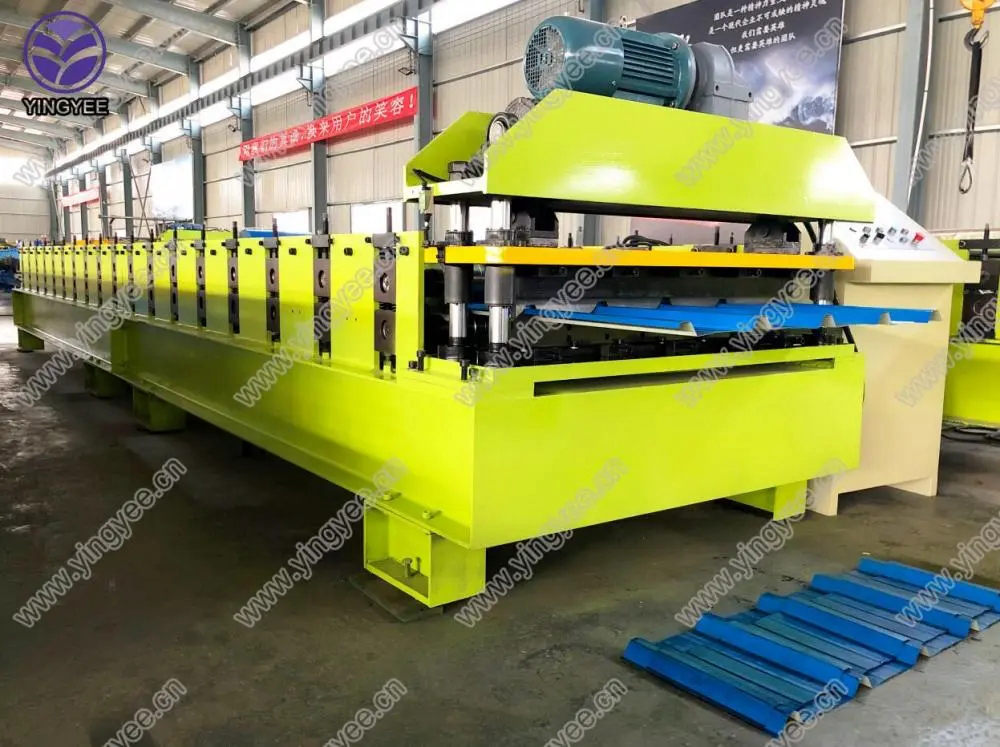
Metal Sound Barrier Cold Bending Machine An Overview
In the realm of construction and infrastructure development, noise pollution has become a significant concern, particularly in urban environments. To combat this issue, engineers and architects increasingly turn to sound barriers as an effective solution. Among the various methodologies employed to create these barriers, the use of metal sound barrier cold bending machines has gained notable traction. This article explores the significance of these machines, their functionality, and their impact on modern infrastructure.
The Necessity of Sound Barriers
Sound barriers play a crucial role in mitigating noise from highways, railways, and industrial sites, thereby enhancing the quality of life for nearby residents. Traditional barriers made from concrete or wood can be effective but often lack aesthetic appeal. As metal materials gain popularity due to their durability and modern aesthetic, the demand for efficient manufacturing techniques becomes paramount. This is where cold bending machines come into play.
What is a Cold Bending Machine?
A cold bending machine is a specialized piece of equipment used for shaping metal sheets and profiles without the application of heat. This process maintains the material's original properties, ensuring high strength and durability. In the context of manufacturing sound barriers, these machines enable the precise bending of metal components, allowing for custom shapes and sizes that meet specific design requirements.
The Benefits of Cold Bending for Sound Barriers
1. Cost-Effectiveness Cold bending methods typically require less energy than hot bending processes, leading to reduced operational costs. This efficiency translates into lower production costs for sound barriers, making them more accessible for large-scale projects.
2. Precision Engineering Cold bending offers enhanced accuracy, allowing manufacturers to create components that fit perfectly together. This precision is critical for ensuring that joints and connections in sound barriers are robust, preventing any gaps that could diminish their noise-blocking efficacy.
3. Material Versatility Various types of metals, including aluminum, steel, and composite materials, can be used in cold bending processes. This versatility allows for the creation of sound barriers that are not only functional but also aesthetically pleasing, aligning with the architectural vision of urban planners.

4. Environmental Considerations The cold bending process generates fewer emissions and waste products compared to traditional manufacturing methods. As sustainability becomes increasingly important in construction, the use of environmentally friendly processes is a significant advantage.
The Process of Cold Bending
The cold bending process involves several key steps. Initially, a metal sheet is fed into the machine, where it is clamped and positioned accurately. Using hydraulic or mechanical force, the machine then applies pressure at specific angles to bend the metal. The operator can control the degree of bend and the radius, allowing for the creation of complex shapes tailored to specific design needs.
After bending, the metal components may undergo additional treatments such as coating or painting to enhance their resistance to corrosion and improve their overall appearance. The finished products can then be assembled into comprehensive sound barrier systems that are not only functional but also visually appealing.
Impact on Urban Development
The introduction of metal sound barrier cold bending machines has revolutionized the way sound barriers are constructed and integrated into urban environments. By allowing for customized solutions, these machines facilitate the creation of barriers that can be seamlessly incorporated into existing landscapes, whether along busy highways or near residential areas.
Moreover, as cities continue to expand, the need for efficient noise mitigation strategies will only grow. Cold bending machines provide a robust solution that can adapt to various urban challenges, ensuring that sound barriers are both effective and harmonious with their surroundings.
Conclusion
The integration of metal sound barrier cold bending machines into construction practices marks a significant advancement in noise management solutions for urban areas. Through their cost-effectiveness, precision, and versatility, these machines enable the production of high-quality sound barriers that not only fulfill their primary function of noise reduction but also contribute to the aesthetic landscape of modern cities. As noise pollution continues to be a pressing issue, the role of innovative manufacturing techniques like cold bending will be essential in shaping a quieter, more livable urban future.